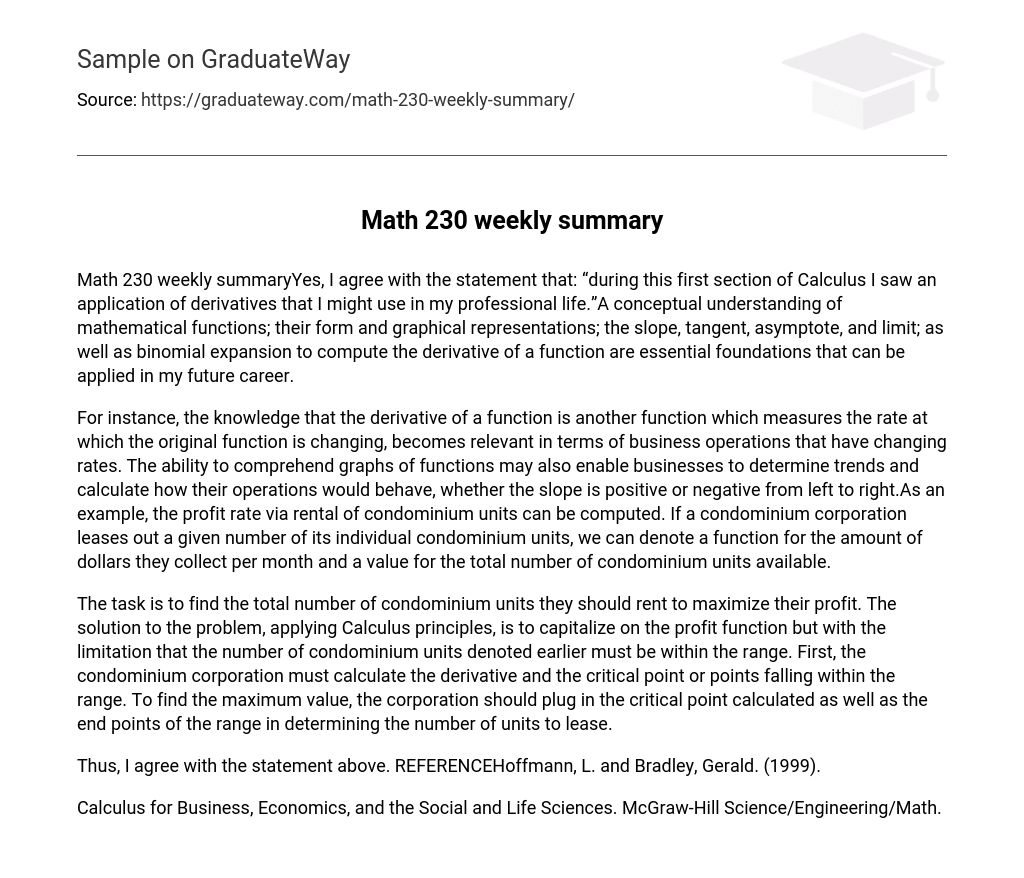A conceptual understanding of mathematical functions; their form and graphical representations; the slope, tangent, asymptote, and limit; as well as binomial expansion to compute the derivative of a function are essential foundations that can be applied in my future career. For instance, the knowledge that the derivative of a function is another function which measures the rate at which the original function is changing, becomes relevant in terms of business operations that have changing rates.
The ability to comprehend graphs of functions may also enable businesses to determine trends and calculate how their operations would behave, whether the slope is positive or negative from left to right.As an example, the profit rate via rental of condominium units can be computed. If a condominium corporation leases out a given number of its individual condominium units, we can denote a function for the amount of dollars they collect per month and a value for the total number of condominium units available.
The task is to find the total number of condominium units they should rent to maximize their profit. The solution to the problem, applying Calculus principles, is to capitalize on the profit function but with the limitation that the number of condominium units denoted earlier must be within the range.
First, the condominium corporation must calculate the derivative and the critical point or points falling within the range. To find the maximum value, the corporation should plug in the critical point calculated as well as the end points of the range in determining the number of units to lease.
REFERENCE
- Hoffmann, L. and Bradley, Gerald. (1999). Calculus for Business, Economics, and the Social and Life Sciences. McGraw-Hill Science/Engineering/Math.





